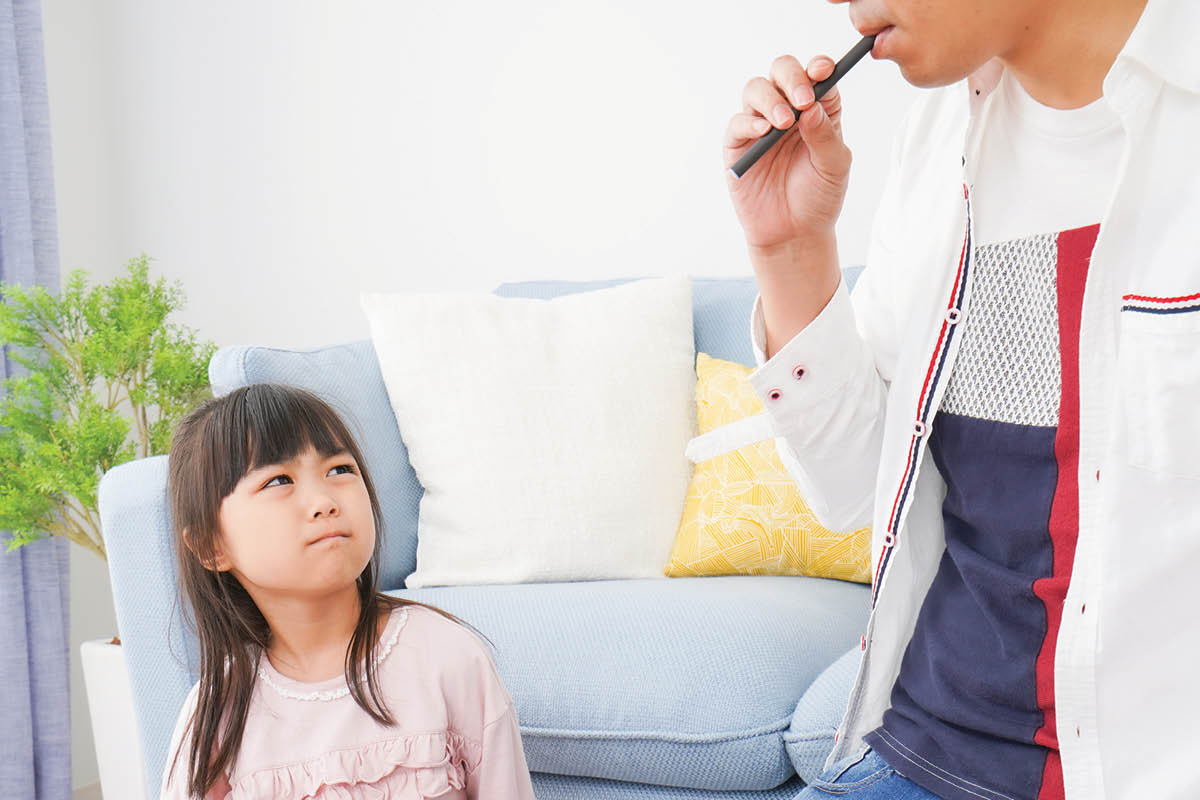Hidden Dangers of Secondhand Vaping

Vaping parents may be exposing their children to hazardous chemicals, despite a widespread belief that the use of e-cigarettes is safe to household members.
A new study by researchers at Emory’s Nell Hodgson Woodruff School of Nursing and Rollins School of Public Health shows that children living in households where e-cigarettes are used are indirectly inhaling substances that could harm their developing bodies.
“Many people who smoke have switched to using e-cigarettes, thinking it’s safer for them and others nearby,” says Jeannie Rodriguez, associate professor of nursing and lead author of the study. “However, there are chemicals in the liquids used in a vape that are hazardous for you and those you care about, who are exposed to the vapors you exhale.”
Rodriguez is a clinician scientist, whose research focuses on understanding the direct and downstream effects of exposures on children’s health using metabolomics and other methods. This study employed the traditional use of blood tests along with less invasive saliva and exhaled breath tests to determine the exposure to secondhand e-cigarette vapor. The results were telling: Children ages 4 to 12 exposed to secondhand e-cigarette vapor showed significantly higher levels of metabolites linked to chemicals found in e-cigarette liquids compared to unexposed peers. These metabolites interfere with the body’s normal operations by disrupting dopamine levels and causing inflammation and oxidative stress. Oxidative stress leads to cellular damage throughout the body and is linked to numerous diseases including diabetes, heart disease and cancer.
Many parents seem unaware of the risks. In focus group discussions with Emory researchers, more than half of participating parents said they considered vaping around their children a minor concern, if a concern at all. This underscores the need for education on the subject. Co-authors include Irene Yang of the School of Nursing and Donghai Liang of Rollins School of Public Health.
Email the Editor







